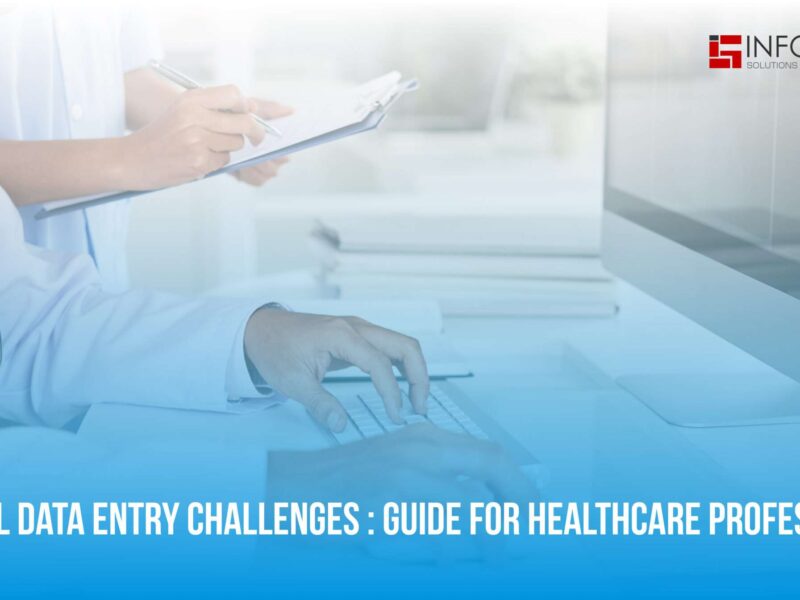Patient care is an utmost priority in the healthcare industry. With the rise of digitalization, hospitals, and medical institutions are able to give the best healthcare services to patients to provide a positive patient recovery experience, both mentally and physically. However, this comes with its share of challenges as the healthcare industry is burdened with many challenges, like high operational costs, slow and redundant processes, strict compliance, and an increased number of patients.
When the workload increases, it becomes tough for healthcare organizations to depend on their workforce. According to a study conducted by the Qatar Foundation and the World Innovation Summit for Health found that around 50% of healthcare workers all around the globe are exhausted. That’s why healthcare institutions can benefit from automation, where mundane tasks can be automated, and the resources can be allocated accordingly as per the workload, such that both staff and patient experience are positively impacted.
The Need for Automation in Healthcare
Different tasks in the healthcare industry, like staffing, data management, administrative duties, and claims management, are done manually. These processes depend upon human intervention and are prone to errors, which can significantly hamper the patient experience. For instance, a delay in claim processing can result in financial stress on the patient’s family, delay in treatment, and increased administrative burden on staff to expedite the process.
However, advanced technologies like AI and RPA, introduce machines in healthcare that can do more based on predefined tasks and conditions and structured data and logic. RPA, or Robotic Process Automation, integrates automation and robotics to perform high-volume, rule-based, repetitive tasks. These solutions streamline the workflow by mimicking human actions throughout the process, from beginning to end.
For instance, appointment scheduling, a tedious task otherwise, can be automated with the help of RPA. The system will scan the incoming data and requests and set up appointments based on relevant data, like an emergency, doctor availability, suspected diagnosis, symptoms, and the most convenient time.
In the UK, the East Lancashire NHS Trust saves around 83,000 paper sheets from using RPA to deal with appointments for an average of 15,000 referrals every month. Besides, it frees up the time of upto two employees.

Three Areas in Healthcare Where RPA and AI are Improving Patient Care
AI and RPA focus on streamlining processes in three areas: administration, diagnosis and treatment, and patient experience. Let’s see how RPA and AI use cases in the three areas:
1. Automating Administrative Tasks
Administrative activities within health care are considered time-consuming and often vulnerable to a high rate of errors. Such processes, ranging from billing to the registration of patients, burden even the most efficient teams. Now, AI and RPA transform how such tasks are executed:
- Smoothen the patient registration process: RPA bots can automatically input data, check insurance eligibility, and schedule appointments, thus reducing waiting time. AI-powered chatbots can even handle patient inquiries to guide them through processes and answer frequently asked questions.
- Billing and claims processing: Medical billing errors hold up payments and dissatisfy patients. RPA ensures that claims are submitted accurately; AI recognizes anomalies or probable fraud, making transactions smoother. For instance, QualiZeal’s InvoicelyAI combines RPA with Intelligent AI to automate the invoicing process.
- Medical Records Management: Health facilities must deal with mountains of paperwork. AI-powered systems can analyze and categorize medical records, enabling health professionals to access patients’ histories and make informed decisions.
2. Enhancing Diagnostics and Treatment
The most exciting use in healthcare of AI is how it can power diagnostics and treatment. While analyzing huge volumes of data, AI can find patterns and insights that the human eye barely can. Here are some ways it can enhance diagnostics and treatment:
- Faster and More Accurate Diagnostics: AI algorithms can go through medical images such as X-rays, MRI, and CT scans with superhuman accuracy. For example, AI-powered tools in oncology have been used to identify the first signs of cancers that, if untreated at an early stage, would turn fatal. Pathologists now use AI to examine biopsy samples, reducing diagnosis time from days to hours.
- Personalized Treatment Plans: AI systems scan and analyze patient information to support the physician in personalized treatment suggestions. Many oncology platforms, for example, Onconaut, have integrated AI to allow treatment suggestions regarding specific cancer treatments associated with genetic makeup. Predictive analytics made using AI identify the patients who can easily become prone to complications due to early doctor interference.
- Surgical Assistant Role: While RPA performs tasks related to the pre-surgical workflow, surgery-related tasks have AI-driven robotic systems that enhance precision. Assisted surgical platforms support surgeons in conducting minimally invasive procedures with higher accuracy, leading to fast patient recoveries.
3. Improving Patient Outcomes
All the improvements made by AI and RPA boil down to one goal: better patient care. AI and RPA are doing so in many ways:
- Reduce Medical Errors: Medical errors are among the top causes of mishaps in healthcare. AI and RPA can reduce human error by automating calculations, cross-checking prescriptions, and flagging inconsistencies.
- Improvement in Telemedicine Services: With the continuous rise in telemedicine, AI-enabled technologies are also gaining momentum. These technologies assist physicians in diagnosing and following up with patients far away. Virtual health assistants use AI to remind patients about medication times, symptom monitoring, or simple health advice.
- Engaging Patients More Actively: AI-powered apps and wearables let patients take their health into their hands, from exercise and fitness goals to managing chronic diseases. The real-time data thus created forms a solid base for informed decisions by the patients and doctors.

The Role of AI and RPA in Public Health Crises
Public health crises, like the COVID-19 pandemic, have outlined the requirement for scalable, efficient healthcare systems. AI and RPA have shown their utility in managing surges in the number of patients, crisis response, and continuity of care:
- Outbreak Tracking and Prediction: AI-powered models have been instrumental in tracking infectious outbreaks. These tools analyze vast datasets for real-time insights into outbreak patterns that help governments and healthcare providers respond swiftly. Predictive models can forecast future surges and help allocate resources and preventive measures.
- Testing and Diagnosis Scaling: RPA has been used to scale testing processes during the COVID-19 pandemic. Automated workflows speed up diagnosis results and are thus vital in ensuring that the affected are located and isolated much faster. AI improved the accuracy of diagnostic tools, such as identifying COVID-19 symptoms in chest scans.
- Supporting Remote Care: Lockdowns made in-person consultations limited, and AI-driven telemedicine platforms with chatbots became imperative. These not only provided medical consultation but also served to monitor patients remotely, thereby reducing the pressure of hospital admissions.
- Vaccination Distribution: RPA bots have been involved in vaccination distribution to automate inventory management, set appointments, and give reminders for subsequent doses. AI models analyzed demographics and logistics data to ensure fair distribution.
- Safeguarding Mental Health: Public health emergencies do not ignore mental health. AI-powered mental health apps and virtual counsellors have helped with coping mechanisms and timely real-time help.
Integrating AI and RPA within public health management can provide resiliency, a proactive stance, and a patient-centric approach to healthcare systems in crisis conditions. These technologies ensure quality stays paramount even in times of extreme pressure.

The Future of AI and RPA in Healthcare
The AI and RPA journey in healthcare has just begun. The more these technologies evolve, the more groundbreaking advancements one sees. Scientists are already employing AI and ML techniques to speed up medicinal-based research and reduce the time it takes to publish new treatments in the market.
Further, this will lead to predictive analytics wherein the doctors can tell the arrival of a disease even before it strikes and the symptoms appear.Virtual Reality can be used for pain management to AI-powered mental health chatbots will become a significant focus, leading to more holistic patient experiences. AI platforms will enable great collaboration across borders by healthcare providers, sharing their knowledge and thus improving patient outcomes worldwide.
The Bottom Line
AI and RPA are not buzzwords; they are transformational forces changing the face of healthcare as we know it. These technologies automate mundane tasks, enhance diagnostic accuracy, and improve patient engagement, paving the way toward a more efficient, patient-centric healthcare system.
While challenges remain, the potential benefits far outweigh the hurdles. As we continue to innovate and adapt, one thing is clear: AI and RPA are not here to replace human care but to enhance it. After all, at the heart of every healthcare journey is the human touch—and with AI and RPA, we’re giving our caregivers the tools to focus more on what truly matters: the patients.
QualiZeal’s Robotic Process Automation services provide organizations with intelligent tools and automation strategies to automate repetitive tasks and standardize the outcomes, reducing errors. With our people, process, and technology, we ensure the successful implementation of RPA in your healthcare organization.

